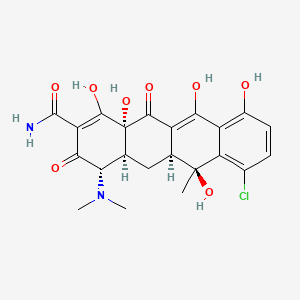| MeSH term | MeSH ID | Detail |
|---|---|---|
| Digital Dermatitis | D058066 | 3 associated lipids |
| Pneumonia of Swine, Mycoplasmal | D045729 | 2 associated lipids |
| Weight Gain | D015430 | 101 associated lipids |
| Urinary Tract Infections | D014552 | 11 associated lipids |
| Urethritis | D014526 | 9 associated lipids |
| Uremia | D014511 | 33 associated lipids |
| Treponemal Infections | D014211 | 3 associated lipids |
| Tooth, Impacted | D014095 | 9 associated lipids |
| Theileriasis | D013801 | 7 associated lipids |
| Syphilis, Latent | D013592 | 4 associated lipids |
| Synovitis | D013585 | 15 associated lipids |
| Swine Diseases | D013553 | 16 associated lipids |
| Subacute Sclerosing Panencephalitis | D013344 | 3 associated lipids |
| Staphylococcal Infections | D013203 | 15 associated lipids |
| Skin Diseases, Infectious | D012874 | 7 associated lipids |
| Salmonella Food Poisoning | D012478 | 2 associated lipids |
| Poultry Diseases | D011201 | 21 associated lipids |
| Pneumonia | D011014 | 10 associated lipids |
| Pharyngeal Diseases | D010608 | 4 associated lipids |
| Pasteurella Infections | D010326 | 8 associated lipids |
chlortetracycline
chlortetracycline is a lipid of Polyketides (PK) class. Chlortetracycline is associated with abnormalities such as Granulomatous Disease, Chronic, Infection, Ischemia, Cerebral Ischemia and Cerebral Infarction. The involved functions are known as Regulation, Binding (Molecular Function), Agent, Stimulus and Process. Chlortetracycline often locates in Protoplasm, Plasma membrane, Membrane, Cytoplasm and specific granule. The associated genes with chlortetracycline are FPR1 gene, P4HTM gene, Homologous Gene, HIST1H1C gene and Microbiome. The related lipids are Lysophosphatidylcholines, Sterols, dilauroyl lecithin, seminolipid and Total cholesterol. The related experimental models are Mouse Model.
Cross Reference
Introduction
To understand associated biological information of chlortetracycline, we collected biological information of abnormalities, associated pathways, cellular/molecular locations, biological functions, related genes/proteins, lipids and common seen animal/experimental models with organized paragraphs from literatures.
What diseases are associated with chlortetracycline?
chlortetracycline is suspected in Ischemia, Cerebral Ischemia, Cerebral Infarction, Granulomatous Disease, Chronic, Infection, Antibiotic resistant infection and other diseases in descending order of the highest number of associated sentences.
Related references are mostly published in these journals:
| Disease | Cross reference | Weighted score | Related literature |
|---|
Possible diseases from mapped MeSH terms on references
We collected disease MeSH terms mapped to the references associated with chlortetracycline
PubChem Associated disorders and diseases
What pathways are associated with chlortetracycline
There are no associated biomedical information in the current reference collection.
PubChem Biomolecular Interactions and Pathways
Link to PubChem Biomolecular Interactions and PathwaysWhat cellular locations are associated with chlortetracycline?
Visualization in cellular structure
Associated locations are in red color. Not associated locations are in black.
Related references are published most in these journals:
| Location | Cross reference | Weighted score | Related literatures |
|---|
What functions are associated with chlortetracycline?
Related references are published most in these journals:
| Function | Cross reference | Weighted score | Related literatures |
|---|
What lipids are associated with chlortetracycline?
Related references are published most in these journals:
| Lipid concept | Cross reference | Weighted score | Related literatures |
|---|
What genes are associated with chlortetracycline?
Related references are published most in these journals:
| Gene | Cross reference | Weighted score | Related literatures |
|---|
What common seen animal models are associated with chlortetracycline?
Mouse Model
Mouse Model are used in the study 'Chlortetracycline and demeclocycline inhibit calpains and protect mouse neurons against glutamate toxicity and cerebral ischemia.' (Jiang SX et al., 2005).
Related references are published most in these journals:
| Model | Cross reference | Weighted score | Related literatures |
|---|
NCBI Entrez Crosslinks
All references with chlortetracycline
Download all related citations| Authors | Title | Published | Journal | PubMed Link |
|---|---|---|---|---|
| Wang R et al. | Effects of chlortetracycline and copper on tetracyclines and copper resistance genes and microbial community during swine manure anaerobic digestion. | 2017 | Bioresour. Technol. | pmid:28432950 |
| Popova IE et al. | Tetracycline resistance in semi-arid agricultural soils under long-term swine effluent application. | 2017 | J Environ Sci Health B | pmid:28277084 |
| Li W et al. | Global protein expression profile response of planktonic Aeromonas hydrophila exposed to chlortetracycline. | 2017 | World J. Microbiol. Biotechnol. | pmid:28271383 |
| Hume ME and Donskey CJ | Effect of Vancomycin, Tylosin, and Chlortetracycline on Vancomycin-Resistant Enterococcus faecium Colonization of Broiler Chickens During Grow-Out. | 2017 | Foodborne Pathog. Dis. | pmid:28128649 |
| Wang W et al. | From illite/smectite clay to mesoporous silicate adsorbent for efficient removal of chlortetracycline from water. | 2017 | J Environ Sci (China) | pmid:28115143 |
| Pulicharla R et al. | Degradation of chlortetracycline in wastewater sludge by ultrasonication, Fenton oxidation, and ferro-sonication. | 2017 | Ultrason Sonochem | pmid:27773254 |
| Zhang D et al. | Changes in the diversity and composition of gut microbiota of weaned piglets after oral administration of Lactobacillus or an antibiotic. | 2016 | Appl. Microbiol. Biotechnol. | pmid:27757509 |
| Kim SY et al. | Occurrence and diversity of tetracycline resistance genes in the agricultural soils of South Korea. | 2016 | Environ Sci Pollut Res Int | pmid:27638788 |
| Zheng D et al. | Performance evaluation and microbial community of a sequencing batch biofilm reactor (SBBR) treating mariculture wastewater at different chlortetracycline concentrations. | 2016 | J. Environ. Manage. | pmid:27526087 |
| Cleary DW et al. | Long-term antibiotic exposure in soil is associated with changes in microbial community structure and prevalence of class 1 integrons. | 2016 | FEMS Microbiol. Ecol. | pmid:27495240 |
